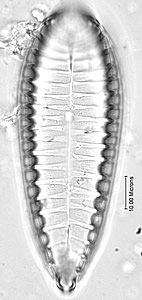Diatoms are grouped by shape into ten artificial (not strictly evolutionary) classes below to aid identification.
Antarctic Freshwater diatoms, in particular species from East Antarctica, are striking for the absence of many morphology types. In the McMurdo Dry Valleys, diatoms are overwhelmingly dominated by naviculoid taxa (Navicula, Diadesmis, Luticola, Stauroneis). Members of other morphology groups are present (achanthoid diatoms, Amphora, Nitzschia), but fewer taxa are present in comparison to the naviculoids.
In contrast to the truncated number of groups and limited diversity in the McMurdo Dry Valley region, a single large temperate lake in the Northern Hemisphere would typically include species from, most, if not all, morphology groups.
See Also: Glossary
| Morphology Type | Number of Taxa | ID |
|---|---|---|
| Centric | 9 | 1 |
| Araphid | 18 | 2 |
| Monoraphid | 30 | 3 |
| Eunotioid | 4 | 4 |
| Naviculoid | 173 | 5 |
| Cymbelloid | 9 | 6 |
| Epithemioid | 1 | 7 |
| Amphoroid | 3 | 8 |
| Nitzschioid | 28 | 9 |
| Surirelloid | 1 | 10 |
Centric
- Valve is organized around a point (radial symmetry)
- Lack significant motility
- Oogamous sexual reproduction
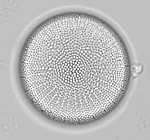
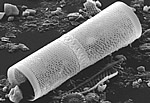
Araphid
- Valve is organized around a line (bilateral symmetry)
- Lack a raphe system, and therefore lack motility
- Rimoportulae (labiate process) may be present

Monoraphid
- Valve is organized around a line (bilateral symmetry)
- Raphe system present on one valve
- Heterovalvar
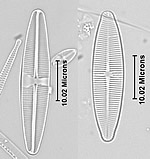
Eunotioid
- Valve is organized around a line (bilateral symmetry)
- Valves often asymmetrical to the apical axis
- Raphe system is weak, with raphe located on valve mantle and face
- Only raphid group with 2 or more rimoportulae (labiate processes)

Naviculoid
- Valve is organized around a line (bilateral symmetry)
- Valves symmetrical to both apical and transapical axis
- Raphid system well developed, raphe on each valve makes cells highly motile
- This group has the greatest diversity among the freshwater diatoms
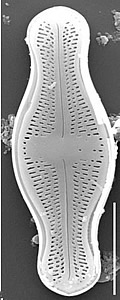
Cymbelloid
- Valve is organized around a line (bilateral symmetry)
- Valves symmetrical to transapical axis, asymmetrical to apical axis
- Raphid system well developed
- Valves with apical porefields that secrete mucilaginous stalks or tubes
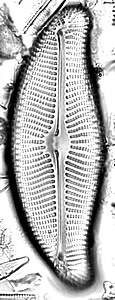
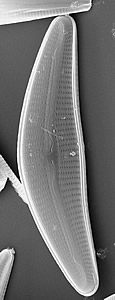
Epithemioid
- Valve is organized around a line (bilateral symmetry)
- Valves symmetrical to transapical axis, asymmetrical to apical axis
- Raphid system well developed, and enclosed within a canal
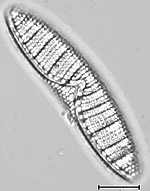
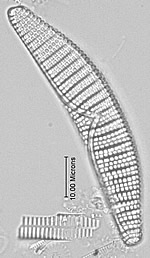
Amphoroid
- Valve is organized around a line (bilateral symmetry)
- Valves symmetrical to transapical axis, asymmetrical to apical axis
- Raphid system positioned eccentrically, near the valve margin
- Primarily a marine genus, with a few freshwater representatives
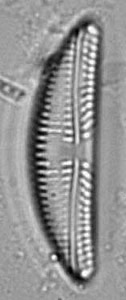
Nitzschioid
- Valve is organized around a line (bilateral symmetry)
- Valves usually symmetrical to both apical and transapical axes
- Raphid system well developed, and positioned near the valve margin
- Raphe is enclosed within a canal and raised onto a keel


Surirelloid
- Valve is organized around a line (bilateral symmetry)
- Raphid system extremely well developed, and positioned around the entire valve margin
- Raphe is enclosed within a canal and raised onto a keel
